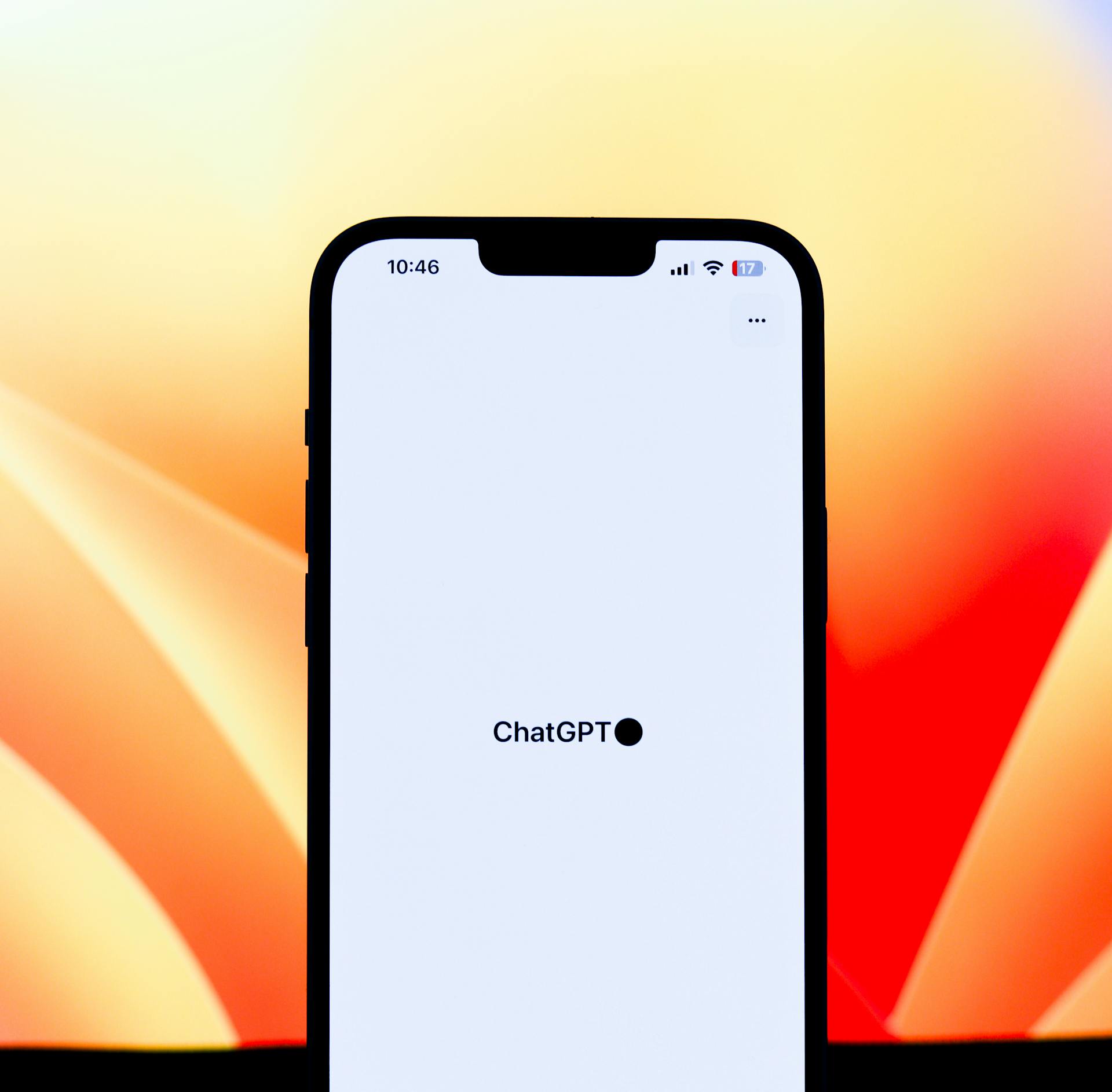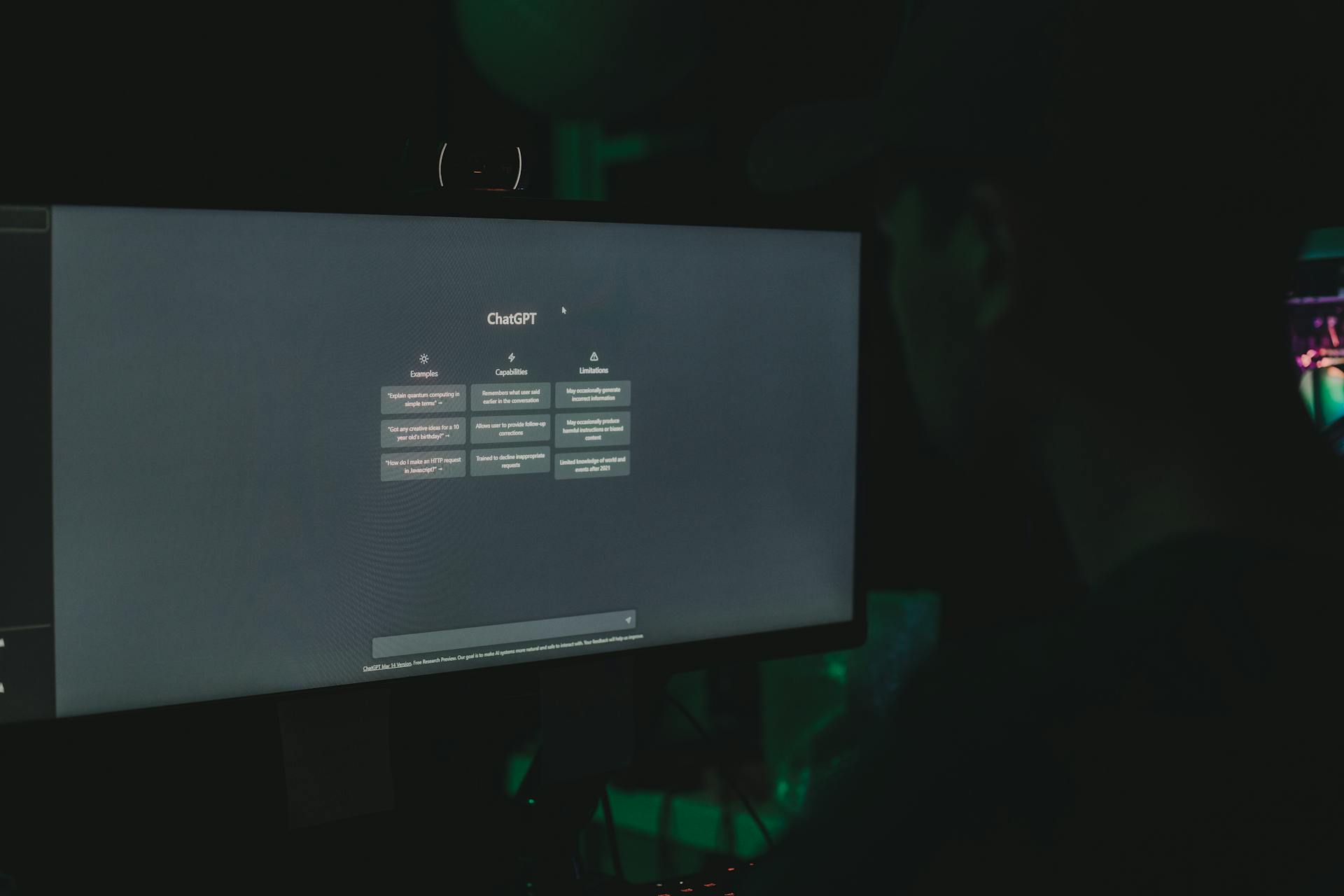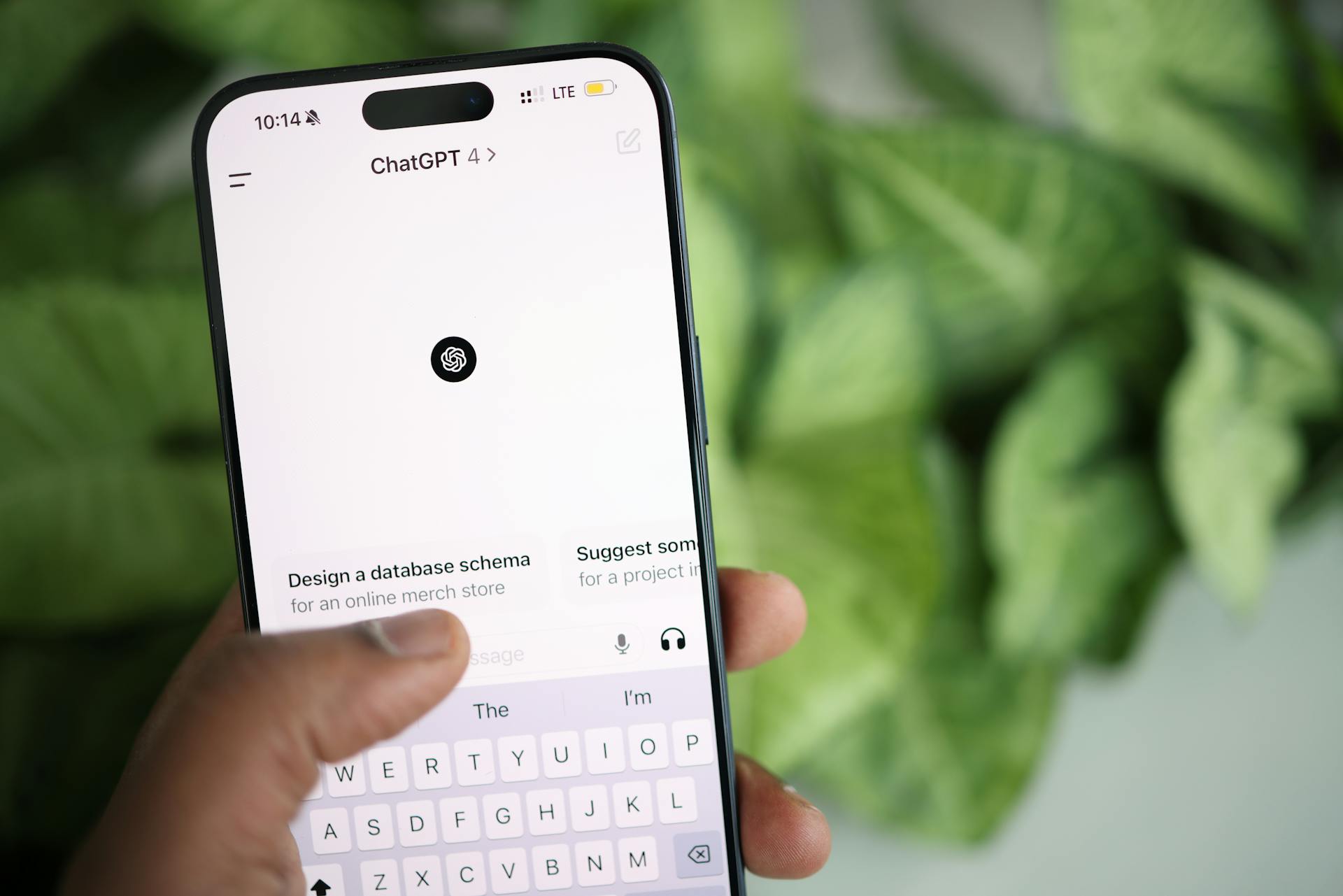
You can fine tune ChatGPT for specific tasks and applications by leveraging the power of prompt engineering. This involves crafting custom prompts that guide the model to focus on the task at hand.
One way to fine tune ChatGPT is by using domain-specific knowledge. For example, you can fine tune the model on a dataset of medical texts to create a conversational AI that can provide accurate health advice.
By fine tuning ChatGPT for specific tasks, you can unlock its full potential and create more accurate and informative conversations.
Preparing Your Dataset
Collecting a representative dataset is the first step in fine-tuning a model. This data should be clean and well-structured.
To gather a good dataset, you'll need to collect data that's relevant to the tasks you want your model to perform. This might involve gathering text from various sources, such as books, articles, or conversations.
Formatting your data correctly is crucial for fine-tuning. Typically, this involves creating a JSONL file where each line contains a prompt and a completion.
Discover more: Fine Tune Ai
A JSONL file is a plain text file where each line is a JSON object. This format is commonly used for fine-tuning datasets.
Quality checking your dataset is essential to ensure it's accurate and complete. Remove any duplicates or irrelevant entries to enhance the training process.
Here are the steps to prepare your dataset:
- Collect Data: Gather a dataset that is representative of the tasks you want your model to perform.
- Format Data: Ensure your data is in the correct format for fine-tuning, typically a JSONL file with prompts and completions.
- Quality Check: Review your dataset for quality, removing duplicates or irrelevant entries.
Addressing Challenges
Maintaining the integrity of the model during fine-tuning is crucial to avoid the model straying too far from its original or picking up biases from the new dataset it learns from.
Dealing with limited labeled data is a major hurdle in fine-tuning large language models, which is necessary for training these AI giants to understand and perform specific tasks effectively.
Using diverse datasets can help avoid overfitting, and implementing robust evaluation methods post-fine-tuning ensures the model doesn't lose its general applicability or fairness.
Striking the right balance between underfitting and overfitting requires meticulous adjustments of hyperparameters, often involving trial and error before hitting on success.
Fine-Tuning ChatGPT
Fine-tuning ChatGPT is a process that adjusts pre-trained models to perform better on specialized tasks, like sharpening a knife to hone its abilities for specific jobs. It's like teaching an old dog new tricks, but in this case, the 'dog' is a sophisticated language model.
To fine-tune ChatGPT, you'll need to create an OpenAI account and upload your training data to the OpenAI platform. This data should be in a JSONL file format, with each line representing a single training example, consisting of a prompt and a response. You'll also need to select the ChatGPT model you want to fine-tune and configure the fine-tuning job.
Fine-tuning can improve performance, customization, efficiency, and even provide new insights by identifying trends and patterns in your data. It's a highly effective method for customizing a pre-trained model to a specific domain task, like generating SQL queries from natural language text.
On a similar theme: Modern Generative Ai with Chatgpt and Openai Models
ChatGPT Basics
Fine-tuning ChatGPT is like teaching an old dog new tricks, but in this case, the 'dog' is a sophisticated language model named ChatGPT. This process adjusts pre-trained models to perform better on specialized tasks.
Fine-tuning hones the model's abilities for specific jobs, much like sharpening a knife. It's a precision adjustment that allows businesses and developers to leverage OpenAI tools more effectively.
ChatGPT is a sophisticated language model that can be customized with your unique dataset to understand and respond more accurately within your desired context. This customization is a critical step in achieving improved outcomes.
Preparing data correctly is a critical step before starting any fine-tuning job, and it requires a deep dive into data preparation. This is a crucial step that can make or break the success of your fine-tuning project.
How to ChatGPT
Fine-tuning ChatGPT is a process that helps tailor the tool to your specific needs. This is done by tweaking its settings and parameters.
To fine-tune ChatGPT, follow the steps outlined in the article. It's a straightforward process that can make a huge difference in the tool's performance.
The first step is to give ChatGPT a "bit of a nudge" to get it working wonders for your project or task. This means fine-tuning it specifically for your needs.
Fine-tuning ChatGPT may seem daunting, but it's actually quite simple. By following the steps outlined in the article, you can get the most out of this incredible tool.
Fine-Tuning ChatGPT with OpenAI API
Fine-tuning ChatGPT with OpenAI API involves several key steps. First, you need to create an OpenAI account and create a new fine-tuning job. Then, you need to upload your training data to the OpenAI platform and select the ChatGPT model that you want to fine-tune.
To fine-tune ChatGPT, you'll need to configure the fine-tuning job, which includes setting the hyperparameters such as temperature settings to customize the creativity levels in generated text. This precision adjustment allows businesses and developers to leverage OpenAI tools more effectively across various applications.
Once the fine-tuning job is complete, you can download the fine-tuned ChatGPT model. To do this, you'll need to create a fine-tuning job and then use the `fine_tuning_job.download_model()` method to save the fine-tuned model as a Python file.
To effectively utilize your fine-tuned model, you'll need to integrate it with the ChatGPT API. This involves making API calls to the fine-tuned model, which can be done using the OpenAI API. You'll need to authenticate with the API and make a request to the fine-tuned model using the `openai.ChatCompletion.create()` method.
Expand your knowledge: Modern Generative Ai with Chatgpt and Openai Models Pdf
Here's a code snippet that shows how to make a request to the fine-tuned model:
```python
import openai
openai.api_key = 'your-api-key'
response = openai.ChatCompletion.create(
model='your-fine-tuned-model',
messages=[{'role': 'user', 'content': 'Hello!'}]
)
print(response['choices'][0]['message']['content'])
```
Remember to replace `'your-api-key'` with your actual API key and `'your-fine-tuned-model'` with the ID of your fine-tuned model.
In terms of evaluating and testing your fine-tuned model, it's essential to use a separate validation dataset to test the model's performance. This helps to understand how well the model generalizes to unseen data. You may need to adjust hyperparameters or further refine your dataset based on the performance of the model.
Related reading: Chatgpt Openai's Generative Ai Chatbot Can Be Used for
Evaluation and Optimization
Evaluation and Optimization is a crucial step in fine-tuning your ChatGPT model. It's where you test its performance and make adjustments to ensure optimal results.
Test the model with a separate validation dataset to see how well it generalizes to unseen data. This will give you a clear picture of its strengths and weaknesses.
Adjusting parameters is often necessary based on the model's performance. You may need to tweak hyperparameters or refine your dataset to get the best results.
You might like: Fine-tuning Huggingface Model with Custom Dataset
Monitoring response time is key to ensuring the model generates answers quickly. This can be done by measuring the time taken for the model to generate responses.
User satisfaction is also crucial, and collecting feedback from users will help you assess the quality of responses. This will give you valuable insights into what's working and what needs improvement.
To keep track of performance, you can monitor response time and user satisfaction. Here's a simple table to help you keep track:
Best Practices
To maximize the effectiveness of your fine-tuned model, it's essential to continuously update your model with new data to improve its performance. This is a crucial step in ensuring that your model stays accurate and relevant.
Regular updates will help you gather insights from users and refine your model accordingly. This is where the user feedback loop comes into play, allowing you to collect valuable feedback and make adjustments to your model.
By following these guidelines, you can ensure that your fine-tuned model is effectively integrated and utilized within your applications, enhancing user experience and achieving desired outcomes.
Addressing Ethical Considerations
Addressing Ethical Considerations is crucial when fine-tuning AI models. Selecting the right dataset is key to mitigating biases and ensuring your model is inclusive and fair.
A high-quality dataset is like choosing the right ingredients for a meal - it determines the outcome. It's essential to explore reputable sources on dataset preparation strategies to get it right.
Evaluating your model's performance involves more than just looking at accuracy or speed. It requires a deep dive into whether it perpetuates stereotypes or unfair assumptions.
Incorporating user feedback is instrumental in reducing bias. By actively listening to diverse groups, developers can make iterative refinements that significantly reduce bias.
Best Practices
To maximize the effectiveness of your fine-tuned model, it's essential to establish a regular update schedule. This means continuously updating your model with new data to improve its performance.
Regular updates are crucial for keeping your model fresh and relevant, and it's surprising how quickly outdated data can affect performance. By staying on top of updates, you can ensure your model remains effective and accurate.
Intriguing read: How to Fine Tune Llm on Custom Data

A user feedback loop is also vital for refining your model. This involves establishing a mechanism to gather insights from users and make adjustments accordingly. By incorporating user feedback, you can tailor your model to meet the needs of your users.
To implement a user feedback loop, consider creating a system for users to provide feedback on their interactions with your model. This could be as simple as a survey or a rating system.
Readers also liked: Architecture for Users to Fine Tune Lora
Frequently Asked Questions
How much does it cost to fine-tune GPT 4?
Fine-tuning GPT-4 costs $0.025 per 1K tokens, with varying costs for inference and output. Learn more about the pricing structure and how it affects your project's budget.
How long does it take to fine-tune GPT?
Fine-tuning GPT typically takes a few minutes to several hours or even days, depending on the size and complexity of the training data. The exact time required varies, but with more examples, the process can take longer.
Sources
- https://workmind.ai/blog/how-to-fine-tune-chatgpt/
- https://www.almabetter.com/bytes/tutorials/chatgpt/fine-tune-chatgpt
- https://lazyprogrammer.me/how-to-fine-tune-chatgpt-gpt-3-5-turbo-using-the-openai-api-in-python/
- https://apidog.com/apidoc/project-370474/api-3845654
- https://www.restack.io/p/fine-tuning-answer-chatgpt-api-cat-ai
Featured Images: pexels.com


